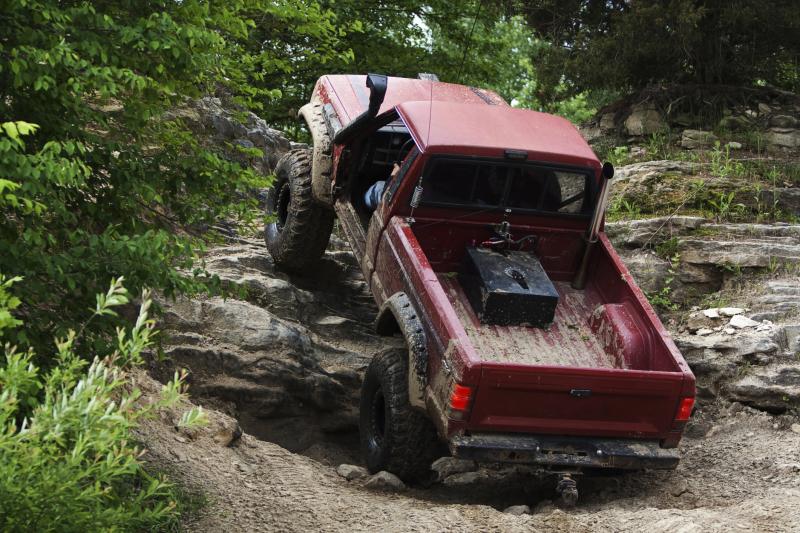
Slow is boring, and there's no speed limit off-road. Properly set up, two-wheel-drive trucks rule where speeds are high, corners are tight, agility is paramount and the driver has the skill, reflexes and ability to keep the thing going. But woe betide a rear-drive truck that hits the trail improperly prepared, and the driver who loses momentum while on it.
A rear-drive, off-road truck has one major factor working both for and against it: weight distribution. Street trucks have rear-drive and light rear-ends because it's assumed the driver is going to need the extra load capacity for hauling. On the trail, though, that weight deficit over the drive wheels can be a serious problem when you're trying to put power down. This makes rear-drive trucks difficult to accelerate from a standstill and comparatively unstable at high speed, but this is also one of the rear-drive truck's greatest advantages. The fastest Group B rally cars in history were incredibly unstable, which is why they could change direction so quickly. But they were also eventually outlawed as death machines for exactly the same reason. So suspension setup in this application becomes a critical balancing act between preserving agility and taming the truck's inherent desire to go everywhere sideways.
Soft springs are generally preferable off-road, but rear-drive trucks have to contend with weight distribution as a major factor. When you accelerate, weight usually shifts to the rear, which enhances traction. But rear-drive trucks often lack the traction off-road to make this weight transfer happen. The trick, then, is to get that first bite at traction so you can use the subsequent weight transfer to put more of the power down. Use a set of "linear" or "single-rate" springs on the front, and street-type "progressive" springs on the rear. The rear progressive springs will compress faster initially than the linear springs up front, but they'll stiffen up under further compression so you don't bottom out. Adjustable shocks all around are a big help, too. You want the front shocks stiffer under compression -- "bound" -- and the rear shocks harder under decompression, or "rebound." This will keep the rear squatting down for longer on acceleration, giving you a deeper first bite.
Any rear-drive truck will try to swap ends when you hit the gas -- it's nature of the beast. That's a good thing when you're drifting around corners, rally-style, but it'll kill you if you're trying to maintain speed on a bumpy straight. To keep the truck stable and safe on the straights, start with rear tires that are about 25 percent wider than the fronts. Combine that with a couple degrees of "toe-in," where the front of the tires point toward each other a little bit. Toe-in on the rear will make that end of the truck more stable at speed. Adjusting rear camber -- the inward lean at the top of the tire -- can help too, if your truck has the adjustment for it. A little inward lean at the top, about 1 or 2 degrees, will allow your rears to lean into turns like a slalom skier, so you can put the power down in a corner. That's especially important when you consider that loose dirt and sand tends to collect in the corners on well-used trails -- and that's the one place you can't afford to bog down.
Light weight is a rear-drive vehicle's trump card, but that's only true if it's in the right places. Ideally, a good RWD truck would weigh as little as possible, but you need weight in the back to put power down. Considering that, you should do everything you can to strip weight off the front half of the truck. That might mean something as simple as stripping out the AC system, the smog system if it's a dedicated off-roader, the heavy front bumper and anything else the truck doesn't need. You can continue the front weight-shedding with a fiberglass hood or fenders, lightweight wheels, an aluminum intake or heads, and even a Lexan windshield if it's a dedicated trail rig. Once you've done all that, you could look into adding some weight to the rear to balance the chassis. The weight should be as low and as far back as possible; tubular rear bumpers filled with lead shot have always been popular for ballast. But don't resort to rear ballast before you deal with your front weight, or you'll end up defeating the purpose of having a light, agile speed machine in the first place.